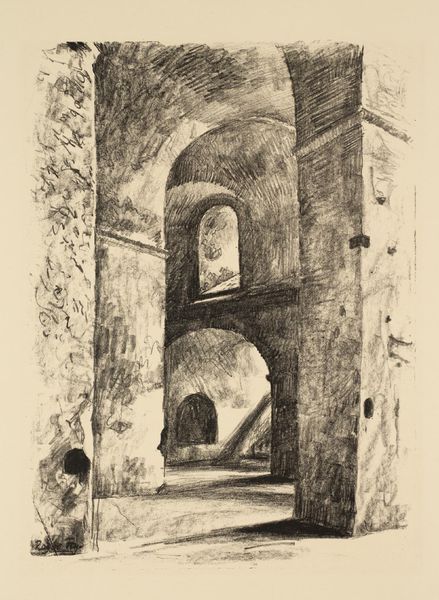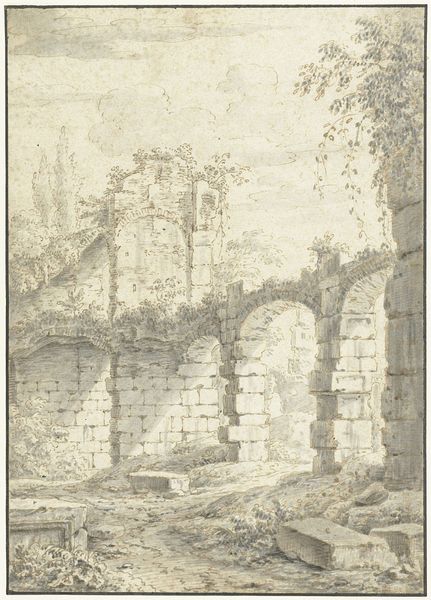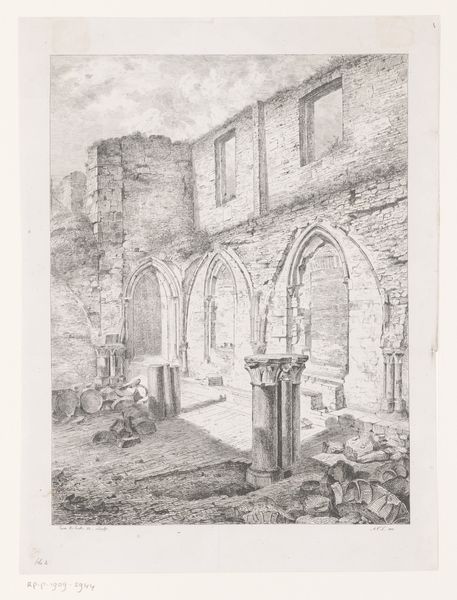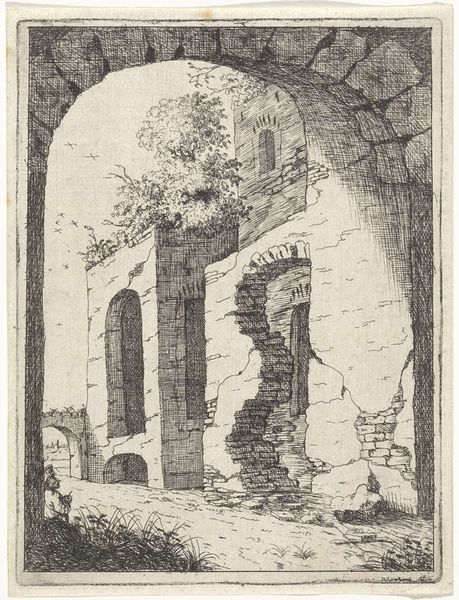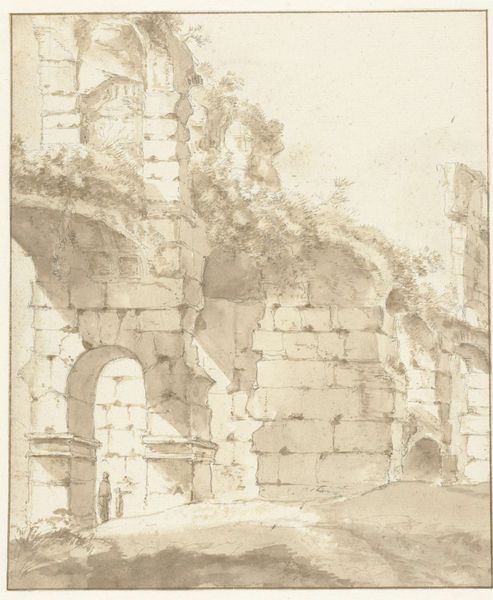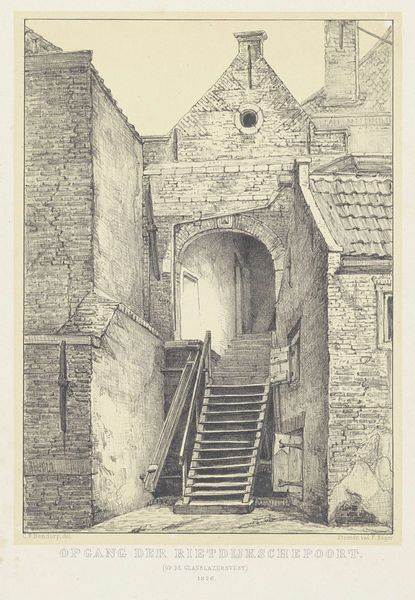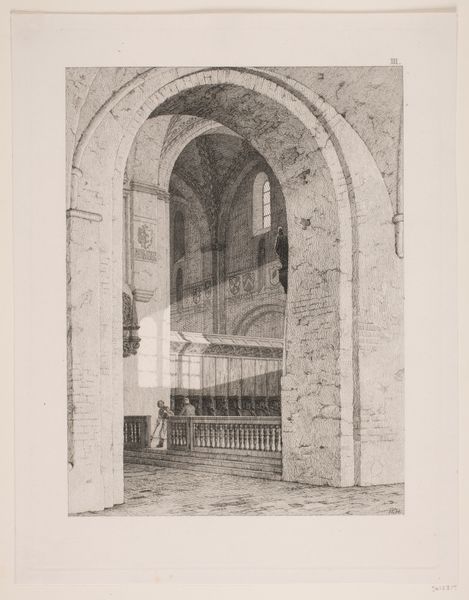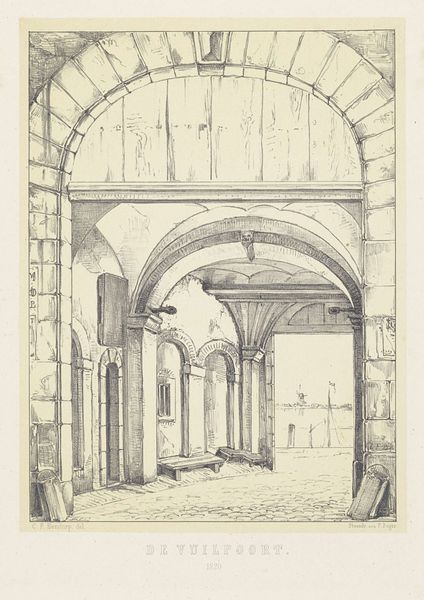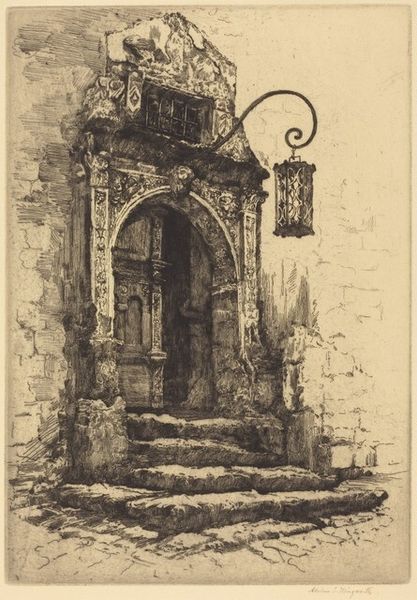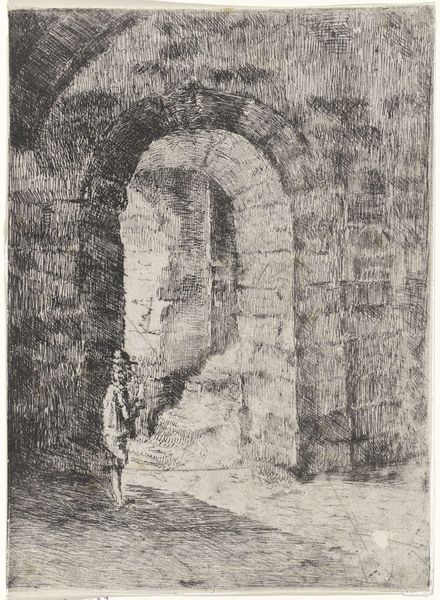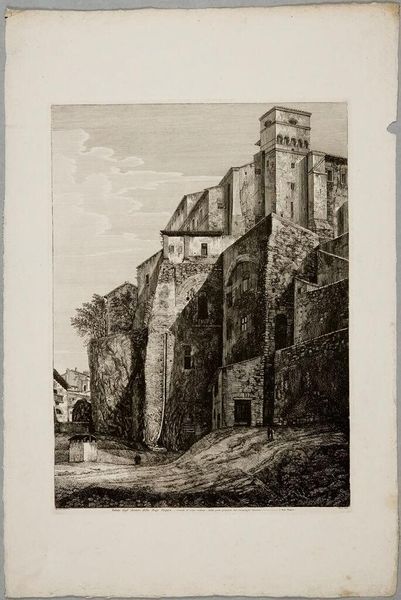
drawing, etching, paper, ink, architecture
#
drawing
#
baroque
#
dutch-golden-age
#
etching
#
landscape
#
etching
#
perspective
#
paper
#
ink
#
cityscape
#
architecture
Dimensions: height 200 mm, width 170 mm
Copyright: Rijks Museum: Open Domain
Editor: So, here we have Abraham Rademaker's "Gezicht op de kapel van het Valkhof te Nijmegen," a drawing and etching made sometime between 1685 and 1735. It depicts a crumbling chapel, and there's this palpable sense of faded glory and decay. What strikes you most about it? Curator: It's fascinating how Rademaker frames the chapel's ruin. The decaying structure becomes a spectacle, almost staged for the viewer. What do you think this framing tells us about the public role of these historical sites in that era? Editor: That’s interesting… almost like he’s turning a ruin into a monument of sorts. So, this wasn’t necessarily about documenting, but about…memory? Curator: Precisely. The "Dutch Golden Age" was already waning during Rademaker's life. Etchings like these often served as visual records but also contributed to a collective memory and a national identity that looked to the past. This image does so, specifically with the intent to idealize national pride via imagery. The Valkhof, even in ruin, signifies a powerful, almost mythical past. It raises the question of who decides what parts of history are remembered and how. Editor: So, even though it depicts decay, it's serving a purpose of idealization through collective memory, shaping a national identity by reminding viewers of the Valkhof’s cultural prominence. I hadn't thought about it that way. Curator: Exactly. Consider the choice of perspective, too. We’re invited in, but from a clear distance. What social implications are made when we look into perspective elements such as that? Are we participant, or observer? Editor: I'm beginning to see this as much more than just a pretty drawing. Rademaker is making a statement, it's both a preservation and an idealization of history! Curator: And understanding that dynamic - that push and pull between preservation, idealization, and the socio-political context - is key to unlocking the true meaning of works like this.
Comments
No comments
Be the first to comment and join the conversation on the ultimate creative platform.

